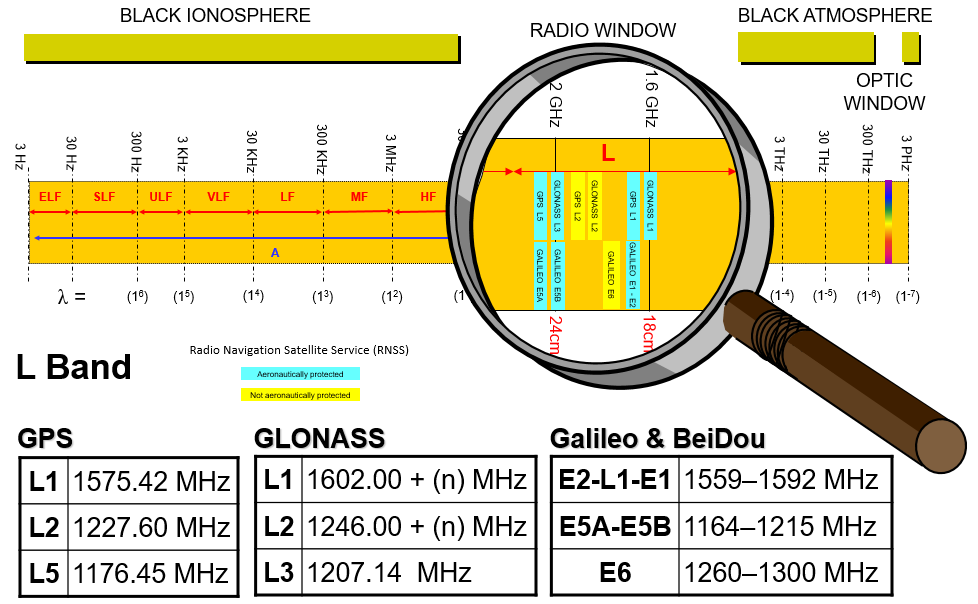The International Telecommunications Union (ITU) allocates the global radio spectrum as well as satellite orbits. GNSS operates in frequency bands allocated to the Radionavigation Satellite Service (RNSS). RNSS is not considered a safety service, unlike services directly allocated to aeronautical use, such as the Aeronautical Radio Navigation Service (ARNS), which is used by terrestrial navigation aids. This is because GNSS supports many different users and applications – not all of which are considered safety services. However, the aviation use of GNSS, based on published standards in ICAO Annex 10, is considered a safety service, meaning that additional precautions are taken to ensure interference free operation.

The ITU have allocated the following L-band frequencies to GNSS (bold are aeronautically used):
- GPS, the centre frequencies are 1575.42 MHz (L1), 1227.6 MHz (L2) and 1176.45 MHz (L5).
- GLONASS operates as frequency divisional multiple access (FDMA) and there are two operational centre frequencies 1602 MHz (L1) and 1246 MHz (L2) and at 1207.14 MHz (L3). GLONASS over this decade will also introduce Code Divisional Multiple Access (CDMA) similar to GPS.
- GALILEO has a range of frequencies assigned in the L-band as follows:
- E2 – L1 – E1 – Centre frequency 1575.42 MHz (band from 1559MHz – 1591MHz).
- E5A – Centre frequency 1176.45 MHz (band from 1164 MHz – 1188 MHz).
- E5B - Centre frequency 1207.14 MHz (band from 1188 MHz – 1215 MHz).
- E6 – Centre frequency 1278,75 MHz (band from 1260 MHz – 1300 MHz).
Note that while SBAS reference stations make use of signals on the L2 frequency, this is not a recognized aeronautical use. This is why aviation use of GNSS will migrate to use only L1 and L5 frequency bands in the future.
Compatibility and interoperability between different GNSS systems (core satellite constellations and augmentation systems) are managed by the United Nations International Committee on GNSS (UN ICG). Signalling techniques such as CDMA (Code Division Multiple Access), orthogonality, and subcarriers (Binary Offset Code or BOC modulation) are used to allow operation of multiple GNSS system within the RNSS frequency band allocation while limiting inter-system interference to acceptable levels. More detail about GNSS signal design can be found on the Navipedia hosted by the European Space Agency (ESA).
Because GNSS is used by many different users, aviation use of GNSS may be subject to collateral interference, such as intentional interference which was not intended to impact aviation operations. Therefore, specific mitigation measures are needed to help ensure an interference free environment and enable timely and efficient reactions when interference is reported. Further guidance on this topic can be found in the ICAO GNSS Manual, Doc 9849, and the ICAO Manual on Testing of Radio Navigation Aids, Doc 8071, Volume 2 on GNSS.